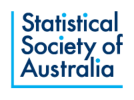STEM Jobs At Risk Without A JobKeeper Lifeline For Unis
Jobs in the science, technology, engineering and maths workforce are now at greater risk as hundreds more job losses start to be announced at universities across the country.
The peak body for the science and technology sector is asking the Australian Government to take a fresh look at the damage being inflicted by the pandemic on Australia’s research and teaching jobs.
Science & Technology Australia President Associate Professor Jeremy Brownlie said our nation’s university STEM researchers and teachers were "the lifeblood of Australia’s research system".
“The grave risk now is that we may start to lose brilliant talent from our STEM research and teaching workforce as universities face the stark choices forced by a collapse in income,” he said.
“If Australia loses this STEM talent, the danger is that we may never get them back into our research system to work on the next set of cures, breakthroughs and lifesaving treatments.”
“We ask the Government to look at the risks starting to materialise to Australia’s sovereign capability in research – and step in with a JobKeeper lifeline to university researchers and teachers.”
A Rapid Research Information Forum report in early May predicted up to 21,000 jobs could be lost at Australia’s universities over the next six months – including 7,000 in research – due to the pandemic.
It found women, early-career researchers and recent graduates are disproportionately at risk because they are more likely to be in vulnerable casual and fixed-term contract roles.
Science & Technology Australia Chief Executive Officer Misha Schubert said there was a strategic interest for the nation to safeguard our STEM research and teaching workforce through this crisis.
“Just as the Government has done in response to the devastating impact on the tourism industry, we’d ask it to look with similar compassion at the plight of the nation’s research workforce,” she said.
“If we can avert these tens of thousands of jobs being lost through the pandemic, it will put the nation further ahead in the enormous task of economic recovery.”
STA has also proposed a one-off boost to the Research Training Program which funds postgraduate research students, who make up more than half of Australia’s university research workforce.
To seek further comment, please contact STA on 02 6257 2891.
This email was sent to eo@statsoc.org.au
Science & Technology Australia, 3/8 Phipps Close, Deakin, Australian Capital Territory 2600, Australia
